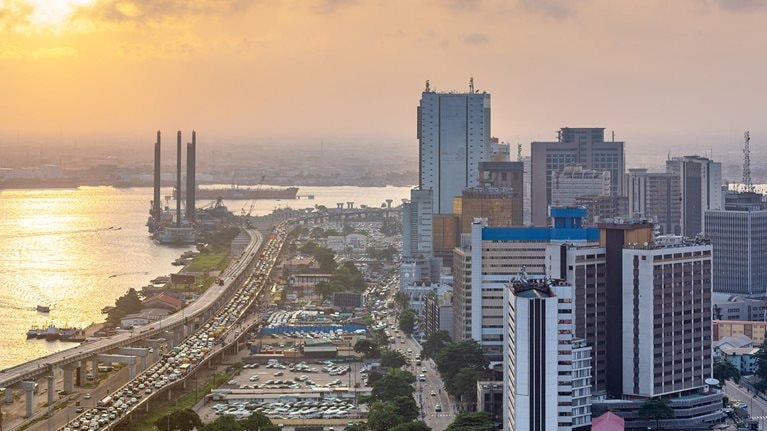As South Africa grapples with rising inflation, inequality, and the impact of the ongoing energy crisis, one could be forgiven for looking at the national picture and feeling that the country has not progressed much over the last 20 years.1
However, a new study from the McKinsey Global Institute (MGI) that looks beyond national averages reveals a degree of progress that may have been obscured by country averages until now. The study uses cutting-edge research techniques—such as nighttime luminosity captured by satellites—and zooms into world regions at a level 230 times more detailed than country-level data sets allow. Two key measures of progress are considered for the period 2000 to 2019: life expectancy and economic activity (measured as GDP per capita).2
At this resolution, it is possible to see that most regions in South Africa, in common with much of the world, managed to make considerable headway over the first two decades of the millennium.
Up close, things can look different
Typically, progress is measured geographically, frequently grouping all people who live in a country or region and averaging the data out to arrive at an aggregated statistic. By averaging data from a large region, prosperity measures—such as GDP—are collapsed into a single number.
By contrast, this McKinsey research has broken down countries into more than 40,000 small geographic areas, called microregions. These microregions offer a “high-res” view that allows for a more nuanced understanding of development to emerge—one not blurred by country or regional averages that could hide rich detail and insights.
Take, for instance, sub-Saharan Africa—a vast geographical area that spans nearly 50 countries and is home to more than 1.1 billion people. The region achieved an average GDP per capita of $3,900 in 2019, placing it in the second decile globally.3
McKinsey’s research looked at the region differently. By breaking down sub-Saharan Africa into 12,200 microregions, the data show that these microregions experienced wide variations in GDP per capita. In fact, about 3 percent of people living in microregions that fell in the eighth decile—with GDP per capita between $17,000 and $27,000—lived in sub-Saharan Africa in 2019.

Pixels of Progress: An African Perspective
Life expectancy and income growth across South Africa have been advancing
Similarly, when viewed close up, it’s possible to gain a deeper appreciation of South Africa’s progress from 2000 to 2019.
In 2000, all 234 microregions within South Africa fell outside what the MGI research defines as the “orange zone” (microregions in the bottom 30 percent of the world both in terms of per capita GDP and life expectancy, or below $2,400 and 65.6 years). All South African microregions had per capita income above $2,400, outside the orange zone, even though life expectancy was below 65.6 years—possibly as a result of the HIV/AIDS epidemic that peaked in South Africa during the 2000s.4
Between 2000 and 2019, both metrics improved in most microregions, although not sufficiently to reach the “blue zone”, the top 30 percent of the world with per capita income above $8,300 and life expectancy of more than 72.5 years (exhibit).

Life expectancy in South Africa increased by between four and ten years across the country. The highest growth in life expectancy appeared to be concentrated in microregions in the Northwest, Free State, and KwaZulu-Natal provinces, such as the Dr Ruth Segomotsi Mompati District Municipality in Northwest Province and the Ugu district in KwaZulu-Natal, both of which saw life expectancy increase by around ten years. No microregions declined in life expectancy.
GDP per capita growth across the country ranged from below –2 percent to about 5 percent, compared to a country average CAGR of 1.2 percent. Only about 15 million inhabitants (out of 58 million nationally) lived in microregions where GDP per capita declined. These were generally concentrated in the Gauteng province and some microregions in the Western Cape province, which at the provincial level showed among the slowest growth in the country, at about 0.2 percent per year. This was not because economic activity was stagnant but because, while GDP grew, population grew roughly in line with it. By contrast, the Limpopo and the Free State provinces grew their GDP per capita by around 2 percent per year, as a result of their populations increasing at a slower rate.
Restoring momentum and how big data can help
While uneven economic prosperity and growth is the reality within many countries, the McKinsey research demonstrated that, over time, microregions that started with lower levels of life expectancy and economic growth in 2000 are slowly catching up with more prosperous ones.
However, progress in South Africa was already stagnating by 2019 and the COVID-19 pandemic has further reversed some of the gains of the first two decades of the millennium. Since March 2020, economic growth, employment, and investment in South Africa (as throughout the world) have been greatly affected by economic headwinds and, despite some recovery, remain constrained.5
Restoring the momentum of progress will be important, and this resolution of data that provides a more comprehensive view of human development could prove helpful to both business leaders and policy makers in this regard.
Government and NGOs could use such data to understand what works at the microregional level, identify areas of need more accurately, design solutions, and also assist the development community in lifting living standards in places that have fallen behind. And for the private sector, this high-resolution research approach could, for instance, help uncover new opportunities to expand and serve customers better, as well as provide insight into new pools of prospective employees in places hidden at a country-level view.
While not enough to solve the very real challenges that South Africa faces, having a high-res understanding of South Africa’s development progress could provide the clarity the country needs to chart a faster and more efficient course forward in these challenging times.


